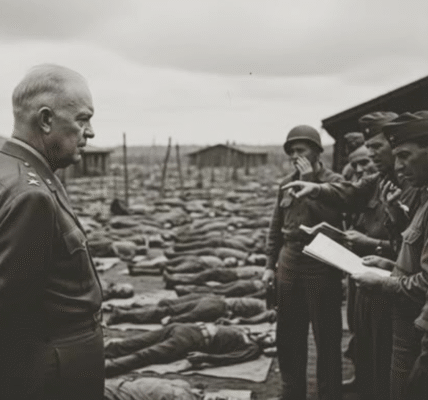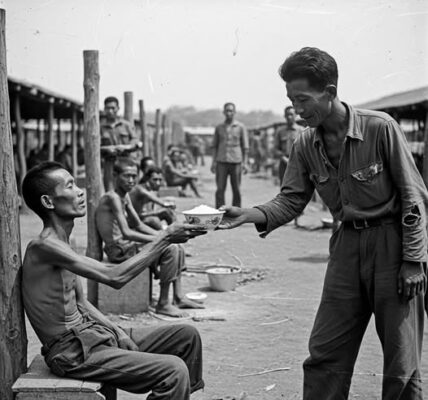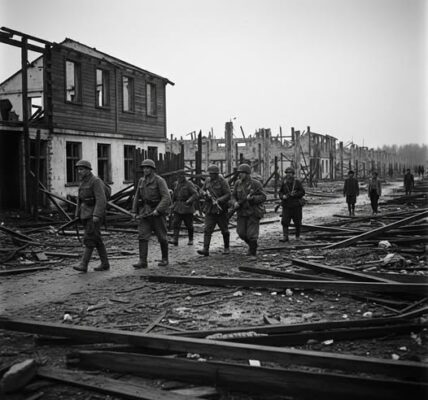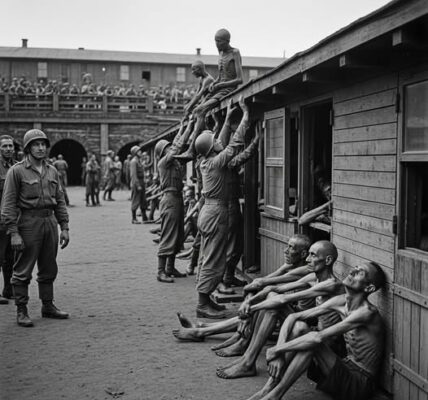Czesława Kwoka – a Polish girl who became a symbol of the suffering at Auschwitz
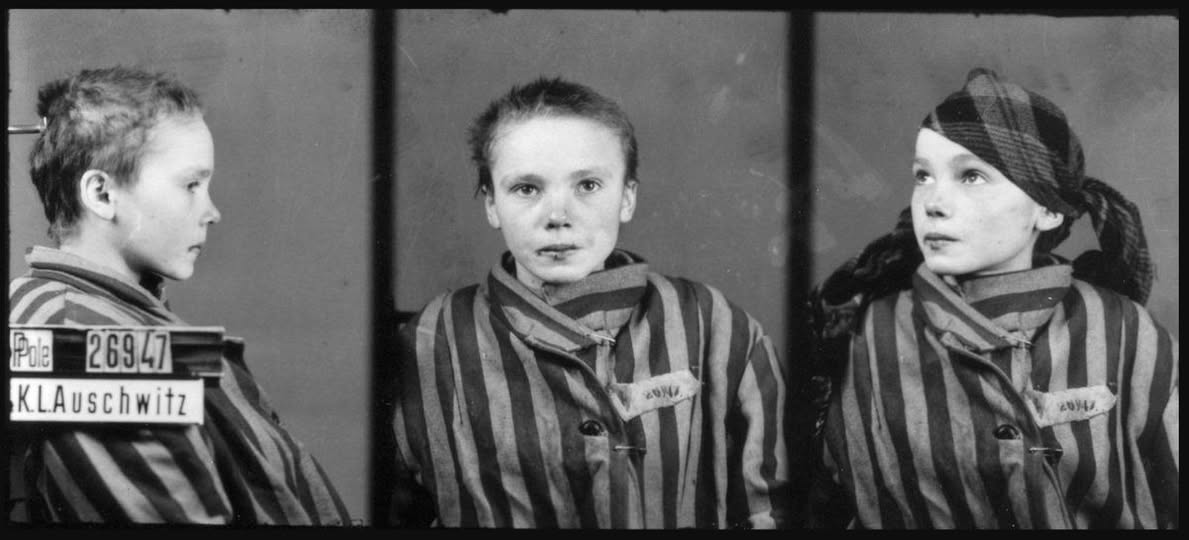
On August 15, 1928, in the village of Wólka Złojecka , in the Zamość region, Czesława Kwoka was born . She was an ordinary young Polish girl, the daughter of Katarzyna, raised in a village atmosphere where life flowed slowly, in harmony with nature. Nothing suggested that her destiny would become one of the most tragic testimonies of the Holocaust , and her face, immortalized in a photograph of the camp, would speak to future generations with a power greater than a thousand words.
In the autumn of 1942, one of the most brutal operations of the German occupation began: the ethnic cleansing of the Zamość region . The aim was to expel the Poles and install German settlers on their land. Czesława Kwoka and her mother also experienced this hell. On December 13, 1942, she was deported to the Auschwitz concentration camp , with the number 26947.
For a girl of only fourteen, the world suddenly ceased to be a childhood space and became a machine of violence, hunger and fear.
The children of Auschwitz were a special group of prisoners. Those who did not work, considered “useless” to the German war machine, were often the first to die, whether in gas chambers, during medical experiments, or by injections of phenol into the heart. Czesława Kwoka survived less than three months in the camp.
During this short period, she experienced every horrible thing: hunger, cold, fear, and humiliation. Yet this single photograph, taken in the camp’s darkroom by prisoner photographer Wilhelm Brasse , saved her from oblivion.
Auschwitz prisoner Wilhelm Brasse was forced to take thousands of photographs to document the new inmates. Czesława’s face was among them.
According to his testimony, just before the photo was taken, the girl was beaten by an SS overseer . This is evident in her eyes, in her swollen lip, in her look of pain and confusion. She did not understand the German orders – she was a child who did not speak a foreign language.
This look, captured on film, later became one of the most moving images of the Holocaust . Looking at this photograph, we see not only a victim but the entire tragedy of thousands of children who never had the right to grow up.
On March 12, 1943, just three months after arriving at Auschwitz, Czesława Kwoka was murdered with a phenol injection to the heart . She was only 14 years old. Her mother, Katarzyna, had died earlier, also in the camp.
Thus ended a life that was just about to begin.

Today, Czesława Kwoka’s name appears in history books, museums, and survivor testimonies. Her face can be seen at the Auschwitz-Birkenau Museum , where it is one of the most moving features of the exhibition.
But this isn’t just the story of one girl. It’s a symbolic tale of the children of the Holocaust , of thousands of innocent lives brutally cut short.
In an age of fake news, disinformation, and the disappearance of authentic testimonies, every personal story becomes an invaluable source of truth. Czesława’s photography reminds us that the Holocaust is not a statistic, but a human face and tragedy .
When we look at Czesława’s camp photograph, we see more than just sadness. We also see silence and innocence , brutally confronted by an inhuman system. Her gaze speaks volumes than entire history books.
For many people, this photo became an impulse to become interested in the fate of children in the camps, to understand that behind every number there is a person – with a name, with a date of birth, with dreams that never came true.
Wilhelm Brasse himself said after the war:
“She was so young, so lost. She didn’t understand what was happening. I’ll remember her face forever.”
This testimony demonstrates how deeply the victims’ memories were etched. Brasse, forced to photograph thousands of people, never forgot the look in the eyes of this one girl.
Today, during our visit to Auschwitz, Czesława’s photograph hangs among hundreds of other prisoner portraits. But it is her face that captures the visitors’ attention. Perhaps because it displays an innocence and vulnerability that contrast with the cruelty of the system.
Her story inspires artists, filmmakers, and writers. Documentaries, articles, and books are currently being written, all attempting to tell the same story: that of a lost childhood, injustice, and the power of memory.
Every memory of Czesław Kwoka is not only an act of remembrance, but also a warning for the future . In a world constantly plagued by conflict, violence, and hatred, his photography reminds us of the path our contempt for others can take.
It is also a call to cultivate humanist values – empathy, compassion, respect for dignity.
On August 15, 1928, a life promised to flourish began. On March 12, 1943, it was abruptly cut short. Between these dates, the story of Czesław Kwoka , the young girl whose face became an icon in memory of the children of Auschwitz , unfolds .
May his story remind us that even the smallest pieces of evidence – a photograph, a memory, a simple glance – can change the way we look at the past.
Because memory is not just a story. It is an obligation.
Note: Some content was generated using AI tools (ChatGPT) and edited by the author for creativity and suitability for historical illustration purposes.





